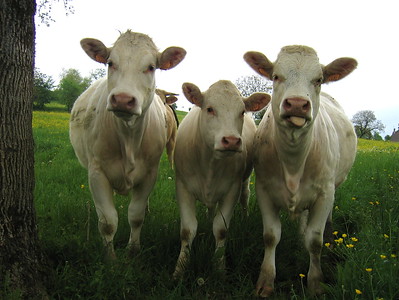Archive for November, 2022
Short Lessons
 Show customers what’s possible. Then listen.
Show customers what’s possible. Then listen.
The best projects are small until they’re not.
Today’s location before tomorrow’s destination.
The best idea requires the least effort.
Ready, fire, aim is better than ready, aim, aim, aim.
Be certain about the uncertainty.
Do so you can discuss.
Put it on one page.
Fail often, but call it learning.
Current state before future state.
Say no now to say yes later.
Effectiveness over efficiency.
Finish one to start one.
Demonstrate before asking.
Sometimes slower is faster.
Build trust before you need it.
“Yin & Yang martini” by AMagill is licensed under CC BY 2.0.
Three Important Choices for New Product Development Projects
 Choose the right project. When you say yes to a new project, all the focus is on the incremental revenue the project will generate and none of the focus is on unrealized incremental revenue from the projects you said no to. Next time there’s a proposal to start a new project, ask the team to describe the two or three most compelling projects that they are asking the company to say no to. Grounding the go/no-go decision within the context of the most compelling projects will help you avoid the real backbreaker where you consume all your product development resources on something that scratches the wrong itch while you prevent those resources from creating something magical.
Choose the right project. When you say yes to a new project, all the focus is on the incremental revenue the project will generate and none of the focus is on unrealized incremental revenue from the projects you said no to. Next time there’s a proposal to start a new project, ask the team to describe the two or three most compelling projects that they are asking the company to say no to. Grounding the go/no-go decision within the context of the most compelling projects will help you avoid the real backbreaker where you consume all your product development resources on something that scratches the wrong itch while you prevent those resources from creating something magical.
Choose what to improve. Give your customers more of what you gave them last time unless what you gave them last time is good enough. Once goodness is good enough, giving customers more is bad business because your costs increase but their willingness to pay does not. Once your offering meets the customers’ needs in one area, lock it down and improve a different area.
Choose how to staff the projects. There is a strong temptation to run many projects in parallel. It’s almost like our objective is to maximize the number of active projects at the expense of completing them. Here’s the thing about projects – there is no partial credit for partially completed projects. Eight active projects that are eight (or eighty) percent complete generate zero revenue and have zero commercial value. For your most important project, staff it fully. Add resources until adding more resources would slow the project. Then, for your next most important project, repeat the process with your remaining resources. And once a project is completed, add those resources to the pool and start another project. This approach is especially powerful because it prioritizes finishing projects over starting them.
“Three Cows” by Sunfox is licensed under CC BY-SA 2.0.
What would you do differently if you believed in yourself more?
Belief in yourself manifests in your actions. What do your actions say about your belief in yourself?
Belief in yourself doesn’t mean everything will work out perfectly. It means that you’ll be okay regardless of how things turn out.
When you see someone that doesn’t believe in themselves, how do you feel? And what do you do?
And when that someone is you, how do you feel? And what do you do?
When someone believes in you more than you do, do you believe them?
You reach a critical threshold when your belief in yourself can withstand others’ judgment of you.
When you believe in yourself, you don’t define yourself by what others think of you.
When you love yourself more, you believe in yourself more.
If you had a stronger belief in yourself, what would you do differently?
Try this. Make a list of three things you’d do differently if you had a stronger belief in yourself. Then, find one of those special people that believe in you and show them your list. And whatever they say about your list, believe them.
Image credit — ajari
Speaking your truth is objective evidence you care.
 When you see something, do you care enough to say something?
When you see something, do you care enough to say something?
If you disagree, do you care enough to say it out loud?
When the emperor has no clothes, do you care enough to hand them a cover-up?
Cynicism is grounded in caring. Do you care enough to be cynical?
Agreement without truth is not agreement. Do you care enough to disagree?
Violation of the status quo creates conflict. Do you care enough to violate?
If you care, speak your truth.
“Great Grey Owl (Strix nebulosa)” by Bernard Spragg is marked with CC0 1.0.
The Power of Leaving a Problem Unsolved
 Nothing changes unless there’s a problem.
Nothing changes unless there’s a problem.
In fact, without a problem, there can be no solution.
One of the devious ways to solve your problem is to create conditions for others to think it’s their problem.
Shame on you if you try to get me to solve your problem.
And shame on me if I try to solve your problem.
The best way for the problem to find its rightful owner is to leave the problem unsolved.
But leaving the problem unsolved also increases the pressure on all the innocent non-owners that work near the problem.
Leaving the problem unsolved is like a game of chicken, where the person who flinches first loses.
No one can give you their problem without your consent, but that doesn’t mean they won’t try.
So, when someone tries to give you their problem, put your hands in your pockets.
Leaving the problem unsolved isn’t a sign of non-caring, it’s a sign of higher-level caring.
Leaving the problem unsolved is the only way to pressure the company into the higher-level (and unpleasant) organizational learning of who is not solving their own problems.
“Prepare for Squirting” by Wootang01 is licensed under CC BY-ND 2.0.

 Mike Shipulski
Mike Shipulski